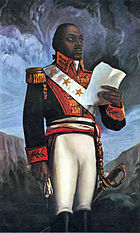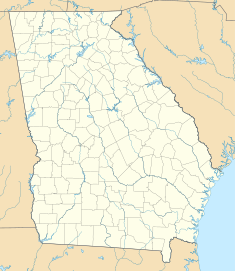Igbo Landing
| Igbo Landing | |
|---|---|
| Native name Ebo Landing | |

The marshes of St. Simons Island
|
|
| Location | Dunbar Creek, St. Simons Island in Glynn County, Georgia, United States |
| Coordinates | 31°11′14″N 81°23′14″W / 31.18722°N 81.38722°WCoordinates: 31°11′14″N 81°23′14″W / 31.18722°N 81.38722°W |

A 1930 post card showing moonlight on Dunbar River, Glynn Haven, St. Simons Island, Georgia
|
|
| Date | May 1803 |
|---|---|
| Participants | A group of 75 Igbo slaves |
| Outcome | Mass suicide in opposition to slavery in the United States. Notable influence on African American folklore and literature |
| Deaths | 13 bodies of drowned slaves were recovered and 3 white overseers drowned but actual numbers of deaths uncertain |
| North American slave revolts |
|---|
 |
|
Igbo Landing (alternatively written as Ibo Landing, Ebo Landing, or Ebos Landing) is a historic site at Dunbar Creek on St. Simons Island, Glynn County, Georgia. It was the setting of a mass suicide in 1803 by captive Igbo people who had taken control of their slave ship and refused to submit to slavery in the United States. The event's moral value as a story of resistance towards slavery has symbolic importance in African American folklore and literary history.
In May 1803 a shipload of captive West Africans, upon surviving the middle passage, were landed by U.S.-paid captors in Savannah by slave ship, to be auctioned off at one of the local slave markets. The ship's enslaved passengers included a number of Igbo people from what is now Nigeria. The Igbo were known by planters and slavers of the American South for being fiercely independent and resistant to chattel slavery. The group of 75 Igbo slaves were bought by agents of John Couper and Thomas Spalding for forced labor on their plantations in St. Simons Island for $100 each.
The chained slaves were packed under the deck of a small vessel named the The Schooner York to be shipped to the island (other sources say the voyage took place aboard The Morovia). During this voyage the Igbo slaves rose up in rebellion, taking control of the ship and drowning their captors in the process causing the grounding of the Morovia in Dunbar Creek at the site now locally known as Igbo Landing.
The following sequence of events is unclear, as there are several versions concerning the revolt's development, some of which are considered mythological. Apparently the Africans went ashore and subsequently, under the direction of a high Igbo chief among them, walked in unison into the creek singing in the Igbo language "The Water Spirit brought us, the Water Spirit will take us home". They thereby accepted the protection of their god Chukwu and death over the alternative of slavery.Roswell King, a white overseer on the nearby Pierce Butler plantation, wrote one of the only contemporary accounts of the incident which states that as soon as the Igbo landed on St. Simons Island they took to the swamp, committing suicide by walking into Dunbar Creek. A 19th-century account of the event identifies the captain by the surname Patterson and names Roswell King as the person who recovered the bodies of the drowned. A letter describing the event written by Savannah slave dealer William Mein states that the Igbo walked into the marsh, where 10 to 12 drowned, while some were "salvaged" by bounty hunters who received $10 a head from Spalding and Couper. According to some sources, survivors of the Igbo rebellion were taken to Cannon's Point on St. Simons Island and Sapelo Island.
...
Wikipedia

